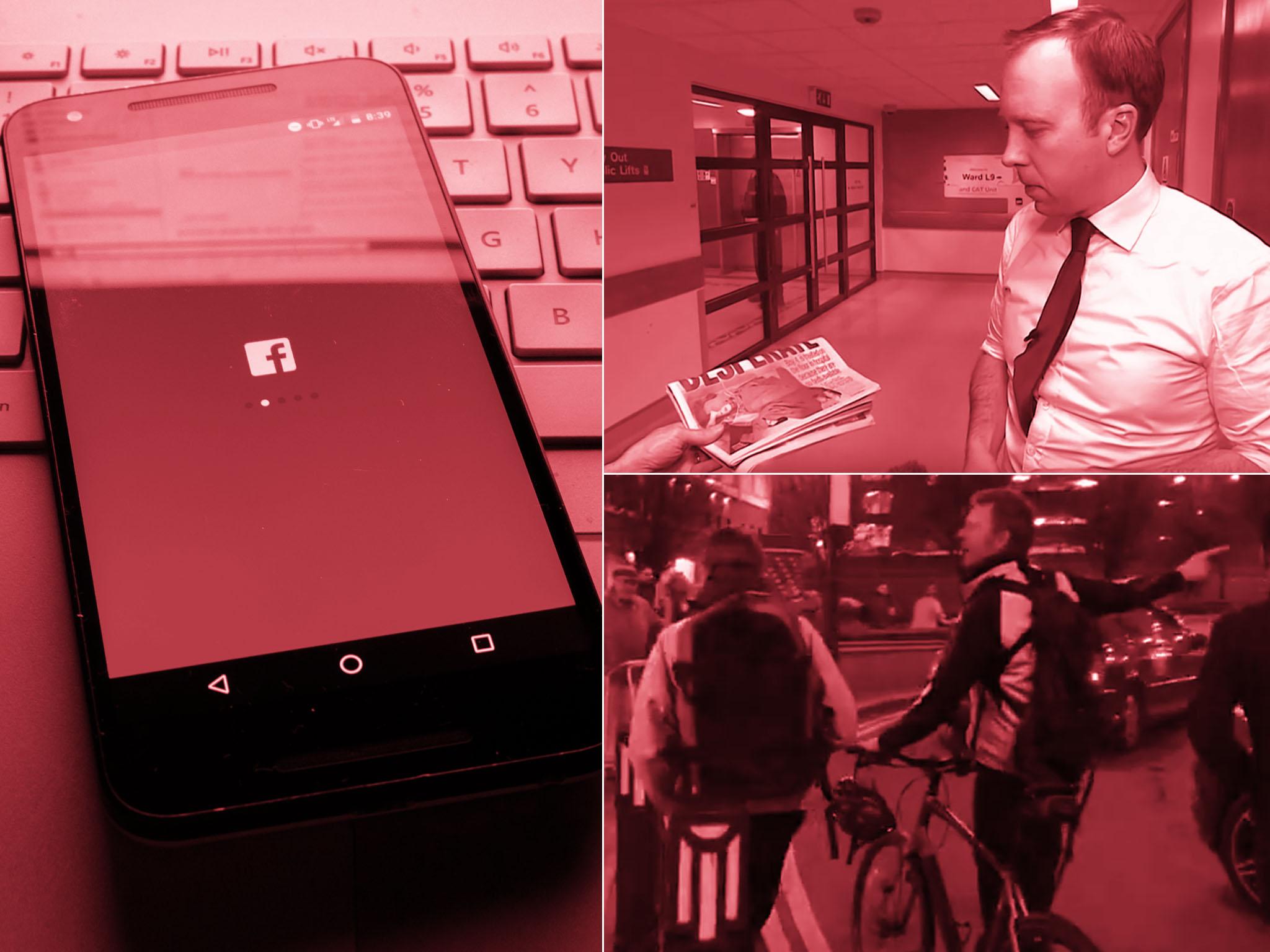How a photo of a boy sleeping on a hospital floor became the centre of two fake news election stories

The case of Jack Williment-Barr, the four-year-old boy who was forced to sleep on a hospital floor as he waited in A&E, has brought attention on the state of the NHS just days before the election. But it has also put focus on perhaps the other major trend of the election: false and misleading claims that have circulated on social media and been amplified by large parts of the traditional press.
The image of Jack lying on a pile of coats has now been at the centre of two storms over false stories. Jack’s story and the shocking image that made it so plain have now been lied about intensely, twice over.
In the first, journalists who claimed to have been briefed by senior Conservatives claimed that Matt Hancock’s adviser had been punched by one of 100 activists who arrived after the health secretary came to the hospital in an attempt to deal with the ongoing story. It turned out that there was no such punch, and that the adviser had simply walked into the hand of one of the very small number of protesters who were at the hospital.
In the second, thousands of people shared a story that claimed to prove the photo of Jack was actually staged, and that his mother had placed him on the floor specifically to take a photo. Once again, the claim was false; once again, it was amplified across social media before any of the facts could be checked.
Before the false stories were circulated, the image helped bring attention to the NHS crisis, and spurred controversy as Boris Johnson refused to look at it. Now it is also a clear example of the kinds of misleading stories that have blighted the election campaign.
Here is how each of those stories happened – and how they managed to travel widely, despite being clearly false.
The punch that wasn’t
Early on Monday, the image appeared to be disastrous for the Conservative election campaign. Boris Johnson spurred backlash when he refused to look at the photo while being asked about it by a reporter, and during a campaign event Jeremy Corbyn brandished it as proof of his party’s claims about the NHS.
In an apparent attempt to stem the outcry, health secretary Matthew Hancock was sent to Leeds General Infirmary, where the original photograph was taken. "Health Secretary has been despatched to Leeds to try to sort this out after PM's awkward reaction earlier,” the BBC’s Laura Kuenssberg tweeted.
Soon after he arrived, reports came from many of the country’s leading political journalists that Mr Hancock’s aide had been attacked. Reports including ITV political editor Robert Peston, Ms Kuenssberg and others suggested
There were also reports that suggested 100 activists had arrived and that their journey had been paid for by the Labour Party.
Some indicated that they had been told the news by Conservatives, and later indicated that the claims had been checked with multiple sources.
It very quickly became clear that all of those claims were false. Video arrived shortly after that made very clear that there were only a few activists, and that the punch had not happened at all.
The reporters who made the claim then walked it back. Ms Kuenssberg said he was “happy to apologise for earlier confusion” and Mr Peston made clear that he had been told wrong and also apologised.
False stories about incident being staged
Then, the same evening, the second misleading narrative took hold. A flurry of tweets began, boosting two stories that were eerily written using the same wording.
The first and most popular claimed to be sourced from a senior nurse who worked at the hospital, though it got the name of it wrong. It said that the photo had been staged by Jack’s mother, and that he immediately got back on a trolley after it was taken.
The second, which appeared to start slightly late, was credited to a paediatric nurse. It used a host of medical jargon to definitively suggest that no child would be treated in such a way, and that therefore the image was either fake or misleading.
In both cases, a flurry of accounts took the text of the tweet and re-shared it as if it was their own. It also made its way onto Twitter, where it was similarly shared without context and as if it was new.
Taken together, the story was shared tens of thousands of times onto an array of different social media sites. While some speculated about the role of bots, many of the accounts that were sharing it did seem to be real.
It didn’t matter that the hospital confirmed the incident happened and apologised to the family, or that the nurses who supposedly served as the source for either story were anonymous and almost certainly not real. The story was shared as if it was fact and was amplified by Conservative MPs and senior journalists.
In some cases, those people have taken down those tweets. But others are still live, and still being interacted with by readers.
Neither of the claims are at all factual. Again, the hospital involved has confirmed that the incident happened, and that the event the photograph shows is real.
Join our commenting forum
Join thought-provoking conversations, follow other Independent readers and see their replies
Comments